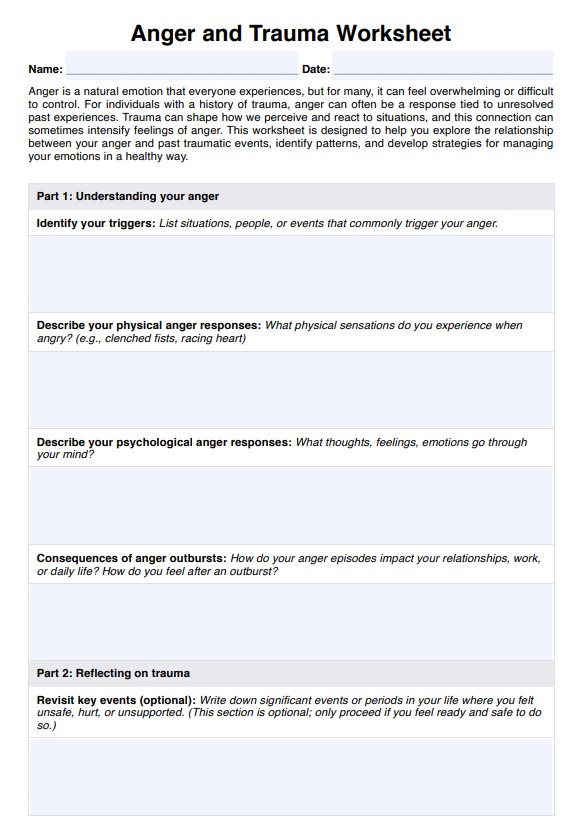The Anger and Trauma Worksheet provides a structured approach to help clients identify links between anger issues and past traumatic experiences. By fostering self-reflection, it offers valuable insights into the emotions and behaviors associated with anger, empowering individuals to regain control and work toward a more fulfilling life.

Anger and Trauma Worksheet
Explore effective strategies for managing anger and trauma with our free Anger and Trauma Worksheet. Ideal for therapists and clients alike.
Anger and Trauma Worksheet Template
Commonly asked questions
Yes, this worksheet can be especially helpful for individuals experiencing symptoms of Post-Traumatic Stress Disorder (PTSD), anxiety, or depression. It supports trauma-focused CBT and helps individuals process emotions, such as fear and anger, related to the traumatic event. The worksheet is an essential tool for both therapists and clients to explore these emotions in a safe and constructive way.
Absolutely. While therapists often guide the worksheet, it can also serve as a self-help resource for adults seeking to manage anger, overcome avoidance, track progress, and develop self-compassion. Exercises like grounding through the five senses and exploring a trauma narrative are beneficial for building emotional resilience and managing stress independently.
EHR and practice management software
Get started for free
*No credit card required
Free
$0/usd
Unlimited clients
Telehealth
1GB of storage
Client portal text
Automated billing and online payments











